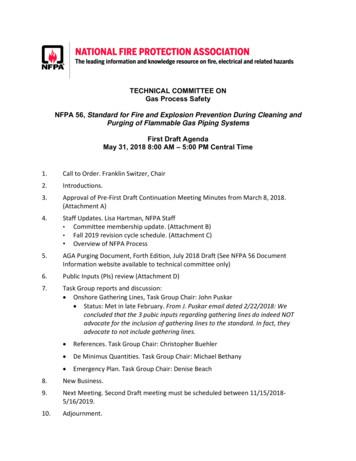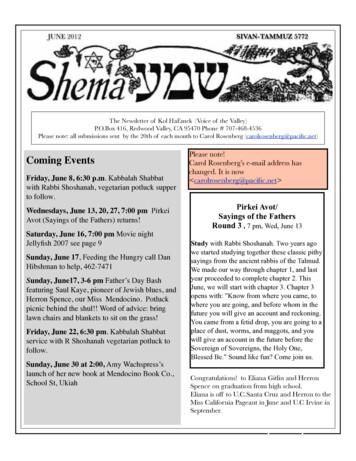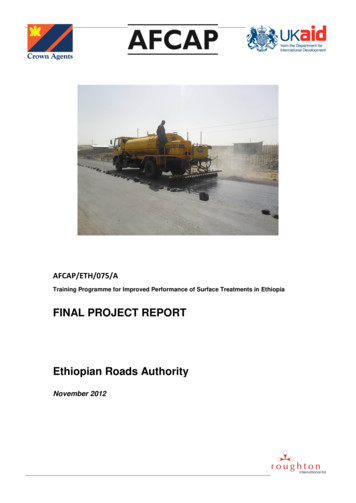FINAL&DRAFT(1559words)&&Submitted&June&2014.& ByLouiseM .
Question’inAmericanImpressionistPainting,1880- oryAmerican Impressionism is generally understood as offering a conservativeperspective in terms of its subject matter – an obscuring of the increasing politicalconflict, social turmoil and economic disparities that characterized U.S. society duringthe Gilded Age-- yet modern (for its time) in its technique and methods of representation.As one art historian has written, ofstillness,solitudeandoptimism.”1 Today, the consensus among art historians, as well as the viewingpublic, seems to be that these are lovely paintings—in part because of their subject matterbut also because of style and technique: softened lines, brilliant color, diffused light. 2Yet in the late nineteenth century, American art critics were sometimes enthralled,sometimes repulsed by the new techniques, and art connoisseurs who valued symboliccompositions did not always find the subject matter suitable. Thinking about theskepticism of nineteenth-century viewers might help us to remember that there is nothingintrinsically beautiful or artistic about these paintings and might prompt us to reflect onwhy today we find them so lovely. Is it simply that we no longer find the techniquesoffputting, accustomed as we are to the abstract expressionism that was to follow? Or arewe attracted to the idealism informing these works, seeing in them evidence of a worldwe no longer experience but nostalgically believe once existed? Or perhaps we aredrawn to these paintings because they seem highly symbolic to us— as we can discern in
ingNewman/2them references to European masters, along with new elements/styles from non-westernsources. Finally, do we respond so favorably because we find in them some transcendentmeaning?Many of the works featured in this exhibition use women as subjects in ways thatmoved beyond traditional portraiture or classic nudes. Yet, despite great variations instyle and composition, there is remarkable consistency to these representations of womenand domesticity. Whether situated indoors or in plein air, whether painted in somber orbright colors, whether “realistically” or “impressionisticly” rendered, the female subjectsare often depicted in contented repose—strolling, picknicking, reading, drinking tea,playing music, eating breakfast, embracing children, doing their bedintheirsolitudeorhappily engaged in dailyrituals. As art historian Diane Mancoff has observed of Mary Cassatt’s paintings(offering insights that apply more generally): “insteadofbeingconfining,thesettings [modestlyfurnishedbedrooms,sun- dfulfilledintherichnessofherexperience.”3Is it possible, then, to approach American impressionist painting as a kind ofdocumentary record, offering glimpses into elite women’s lives, or at least into thecultural values that upheld “woman’s sphere” as an ideal? Victorians understood thehome as a realm that women controlled and where they were [supposed to be] happiest,4a realm where men spent much less time as their work and leisure activities increasinglytook place in the “public sphere”—which raises the question of whether contemporary
ingNewman/3men and women responded to these paintings differently, given how different their liveswere.5 It’s a hard question to answer, not least because historians have been able togather more evidence of men’s reactions to impressionism than women’s.6 For example,a French male critic is known to have marveled at howCassatt“succeededinexpressing cinterior,”7 butwould Mary Ead, an American woman, have had the same response, given the profoundisolation and boredom she experienced as a young faculty wife at a small college inCalifornia in the 1890s? Ead, who was well educated and had worked as a teacherbefore she married, describes how she has come to feel about reading and having sthecontrastofadullhome,shefears.”8It is impossible to know how many Victorian women shared Ead’s feelings, butwe do know that extensive discussions about the “woman question” appeared in U.S.print media, beginning in the 1870s and extending into the next century, as increasinglylarge numbers of women voiced dissatisfaction with the confinement of woman’s sphereand sought access to activities and opportunities outside the home that had traditionallybeen denied them.9 As andperiodical,atthedinner- ere,are,willbe,andshouldbeistheconstantquestion .althoughwomengenerallyare
e,middle- senrolled(butjust2.8percentofallwomenage18- womenaged18- ficant,reflectingthesocialchanges affecting American women’s lives at the time, and fueling middle-class women’sincreasing involvement in social and political reform, such as the temperance, labor, andsuffrage terests.12The modern woman desiredan “independent” life, and was severely criticized for being selfish and seeming to refuseto fulfill her social obligation to have children and thereby “advance the race.”13Although ��tomostcontemporariesitseemedthatbirthrateswere
Inthishighlychargedatmosphere,mostwhitemiddle- ‐andupper- tionlikeart- ‐- fromit- ‐- ndhalfofthenineteenthcentury.MaryCassatt(1844- .16As a documentary record, then, these paintings offer only partial information: wemay glimpse some of the rituals and routines of elite women’s lives-- re)butthereis muchabout these women’s lives that nimpressionistpaintingstonewaudiences.17Noneof
erearesignificantomissions:weneverseehow much effort is involved in householdmanagement and childrearing; nor do we view the labor of working-class women thatmake the lives of privileged women possible—the maid who brings the tea, the nannywho puts the children down for a nap, the cook who prepares the dinner meal-- all theservants, tutors, and nannies who populated these households but are just outside be,theyarenotone- ndRealism:ThePaintingofModernLife,1885- H.Gerdts.AmericanImpressionism
ion,1880- York:Stewart,Tabori&Chang,1998),p.41. Although art critics at the time often felt that womenartists brought a special sensitivity to their subjects (see footnotes 7 and 8 below), I amunable to discern such gender differences when comparing the works of FrederickFrieseke, William Merrit Chase, Robert Reid and Childe Hassam with Mary Cassatt,Lilla Perry or Helen une1895):753- istinL.Hogansonexploreshowmiddle- ‐classandupper- nishmusicroom,Englishdiningroom- ‐- ‐or
Turner(1858- ctionofAmericanDomesticity,1865- 7),pp.13- rner(1858- :E.Weyhe,1926),pp.56- ecialsensibilityinCassatt’swork,“aflutter
,”TheNorthAmericanReview(June1914):158,451,706.
ewman,ed.,Men’sIdeas/Women’sRealities,pp.105- :409- ‐417,describesthefive- ‐to- ressingsuchambivalenceformorethanageneration.
307- gherambitionplacedbeforeherthansocialsuccess indoccupations,which,whilebeingmoresoul- thanIthelimitationsofmyownwork adtogoinceaselessstruggling dinInternationalStudio59(July1916):iii.
.metmuseum.org/toah/hd/cast/hd cast.htm(October2004).
mp;Impressionist&Painting,1880M1920& &U.S.&History& & & American Impressionism is generally understood as offering a conservative perspective in terms of its subject matter – an obscuring of the increasing political
Final Date for TC First Draft Meeting 6/14/2018 3/15/2018 Posting of First Draft and TC Ballot 8/02/2018 4/26/2018 Final date for Receipt of TC First Draft ballot 8/23/2018 5/17/2018 Final date for Receipt of TC First Draft ballot - recirc 8/30/2018 5/24/2018 Posting of First Draft for CC Meeting 5/31/2018 Final date for CC First Draft Meeting .
Conc Diagram- All Failures Cispa Data Avalon Date PCB Lot Number Igarashi TPS date codes. MB Panel Number VIAS Hole Location Failure 9-June'09 11-June'09 923 162 12-June'09 923 163,164 TBD TBD 1 13-June'09 923 164 15-June'09 923 166 16-June'09 923 167 17-June'09 923 168,171 18-June'09 923 171 19-June'09 923 171 20-June'09 923 171 22-June'09 923 173 23-June '09 923 179 24-June '09 923 .
June 16 Shelach Lecha June 23 - Korach June 30 Hukath We Remember Sylvia Marans Elberg - June Vera Meyerhoff - June Daniel Rosenberg - June1 Edward Wandrei - June 6 Helen Feinberg-Ginsburg - June 6 Thelma Cohn - June 12 Wilma Sizemore June - 16 Joseph P. Suffel - June 21 Eliot Rivers - June 31 Paul Aaron Kowarsky - Sivan 14 -
Winter Carnival 14 June P&C Disco 8 17 June Board Meeting 18 June 19 June 20 June 21 June Bletchley Vale Cup 9 24 June Swimming Lessons Yr 3 – 6 P&C Meeting 25 June Swimming Lessons Yr 3 – 6 26 June Swimming Lessons Yr 3 – 6 Pre Primary Junior Olympics 27 June Swimming Lessons Yr 3 – 6 Yr2 Start Smart 28 June Swimming Lessons Yr 3 – 6 10
Final Exam Answers just a click away ECO 372 Final Exam ECO 561 Final Exam FIN 571 Final Exam FIN 571 Connect Problems FIN 575 Final Exam LAW 421 Final Exam ACC 291 Final Exam . LDR 531 Final Exam MKT 571 Final Exam QNT 561 Final Exam OPS 571
September 2012, after undergoing peer review. Accreditation Report (draft) submitted on 13 March 2012. The Final version was completed in September 2012, after undergoing review by Crown Agents and ERA and subsequent amendments. Final Project Report (draft) submitted on the 13 March 2012. The final version was
WRI-LMI, Final Draft, 5/6/10 1 FINAL DRAFT . May 6, 2010. The GHG Protocol for the U.S. Public Sector: Interpreting the Corporate Standard for U.S. Public Sector Organizations. A joint publication by World Resources Institute & Logistics Management Institute . This is a final draft of the GHG Protocol for the U.S. Public Sector:
Studies have shown veterinary surgeons do not feel they receive adequate training in small animal nutrition during veterinary school. In a 1996 survey among veterinarians in the United States, 70% said their nutrition education was inadequate. 3. In a 2013 survey in the UK, 50% of 134 veterinarians felt their nutrition education in veterinary school was insufficient and a further 34% said it .























